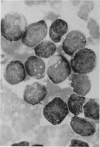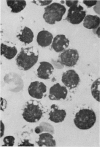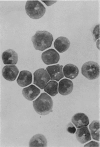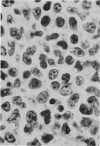Abstract
The clinical and pathological features of 64 children with non-Hodgkin's malignant lymphoma seen between April 1962 and June 1973 are described. Forty-one children had diffuse, undifferentiated, non-Burkitt lymphoma (lymphoblastic lymphoma). They tended to be boys under 10 years of age and their median survival was 1 year. Almost one-third are surviving for 1-11 years, most in initial complete remission. Nineteen children had diffuse, poorly differentiated, histiocytic lymphoma. They tended to be boys more than 10 years of age, their median survival was only 6 months, and only the 3 patients with Stage I peripheral node tumour survived. Two children had nodular, lymphocytic, poorly differentiated lymphoma and 2 had lymphoma resembling the Burkitt type. From our clinical and pathological observations, we conclude that non-Hodgkin's malignant lymphomata in children cannot be separated from the acute lymphocytic, histiocytic and unclassified leukaemias by cytological or histological methods. What is called diffuse, undifferentiated, non-Burkitt type, or lymphoblastic lymphoma is actually acute lymphocytic leukaemia without apparent invasion of marrow and peripheral blood by neoplastic lymphocytes at time of diagnosis. What is termed diffuse, histiocytic lymphoma is acute histiocytic leukaemia without apparent infiltration of marrow and peripheral blood at initial presentation. One could say just as well that acute lymphocytic leukaemia is Stage IV lymphoblastic lymphoma and that acute histiocytic leukaemia is Stage IV histiocytic lymphoma. Further classification of lymphocytic and histiocytic cancers by newer functional, chemical and morphological methods should include both what is called lymphocytic or histiocytic leukaemia and what is called non-Hodgkin's lymphoma as one group of diseases, susceptible to subclassification by the new methods. We recommend that Stage I lymphocytic and histiocytic cancers be treated with local irradiation. Patients with Stages II-IV tumours should receive anti-leukaemic forms of therapy including prolonged multiple agent chemotherapy and preventive central nervous system irradiation. Staging laparotomy should be considered in patients with Stage I tumour in low cervical, axillary and inguinal nodes.
Full text
PDF




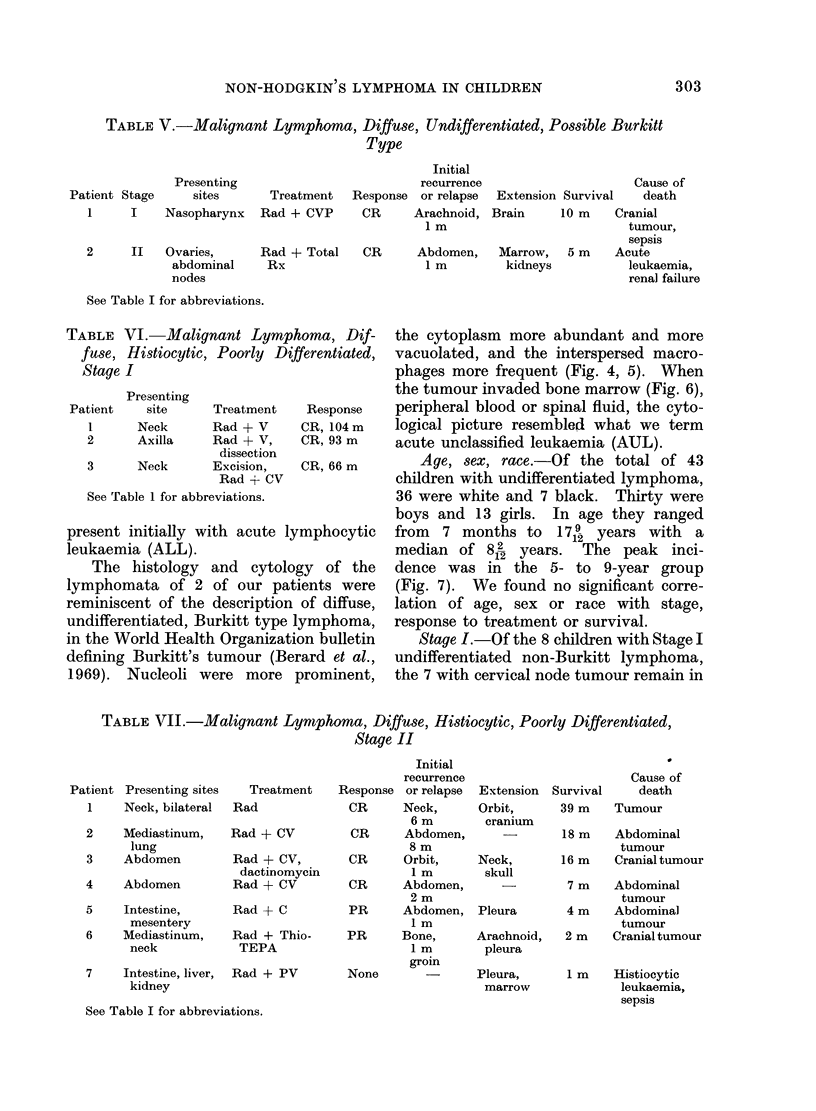

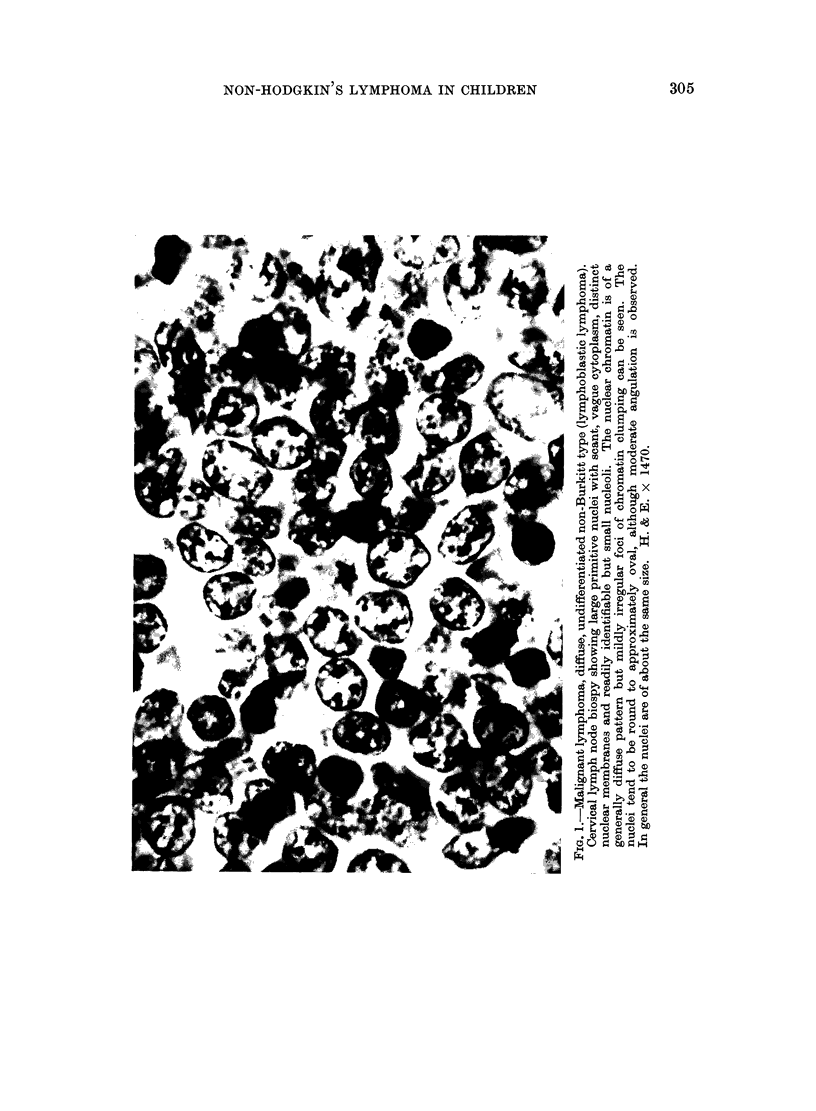
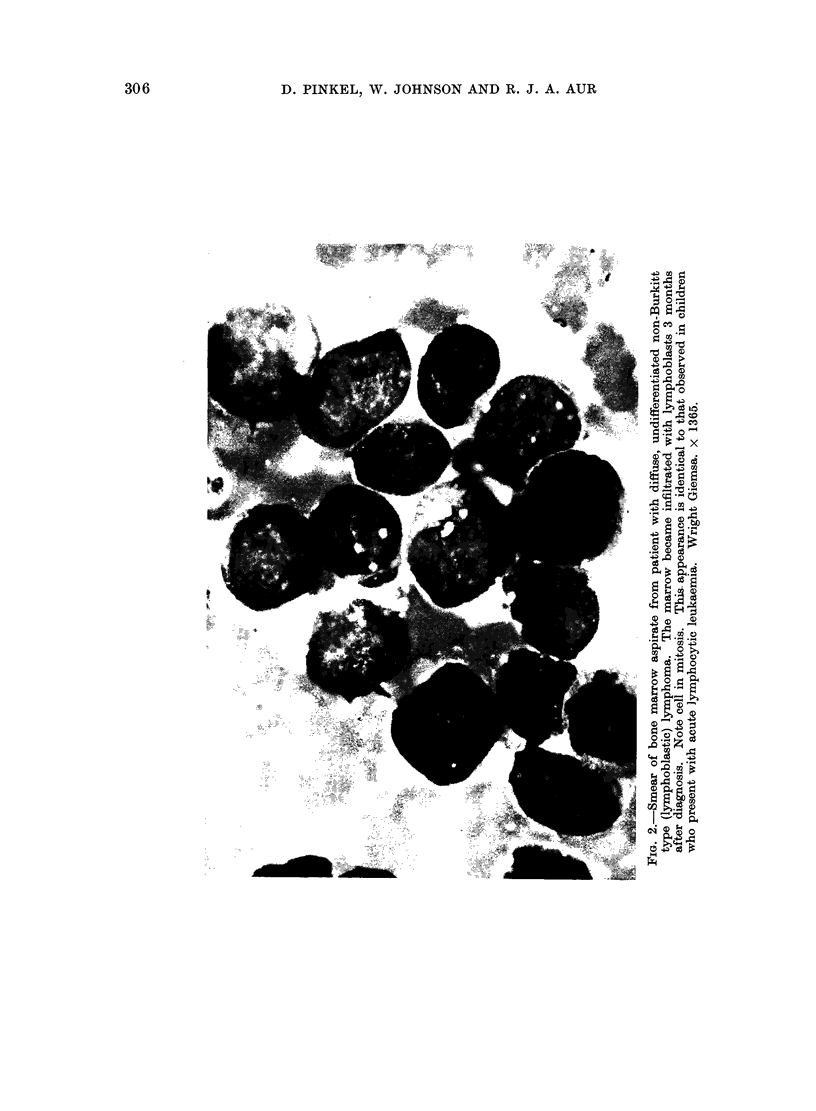













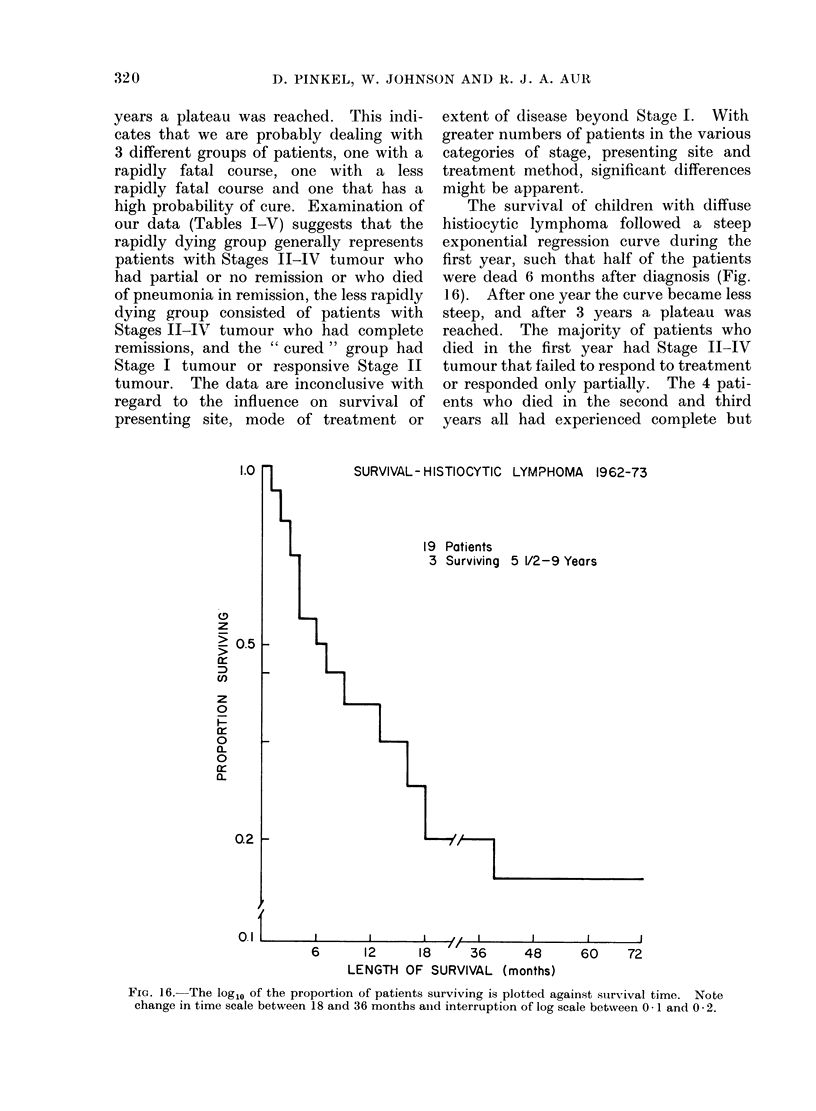
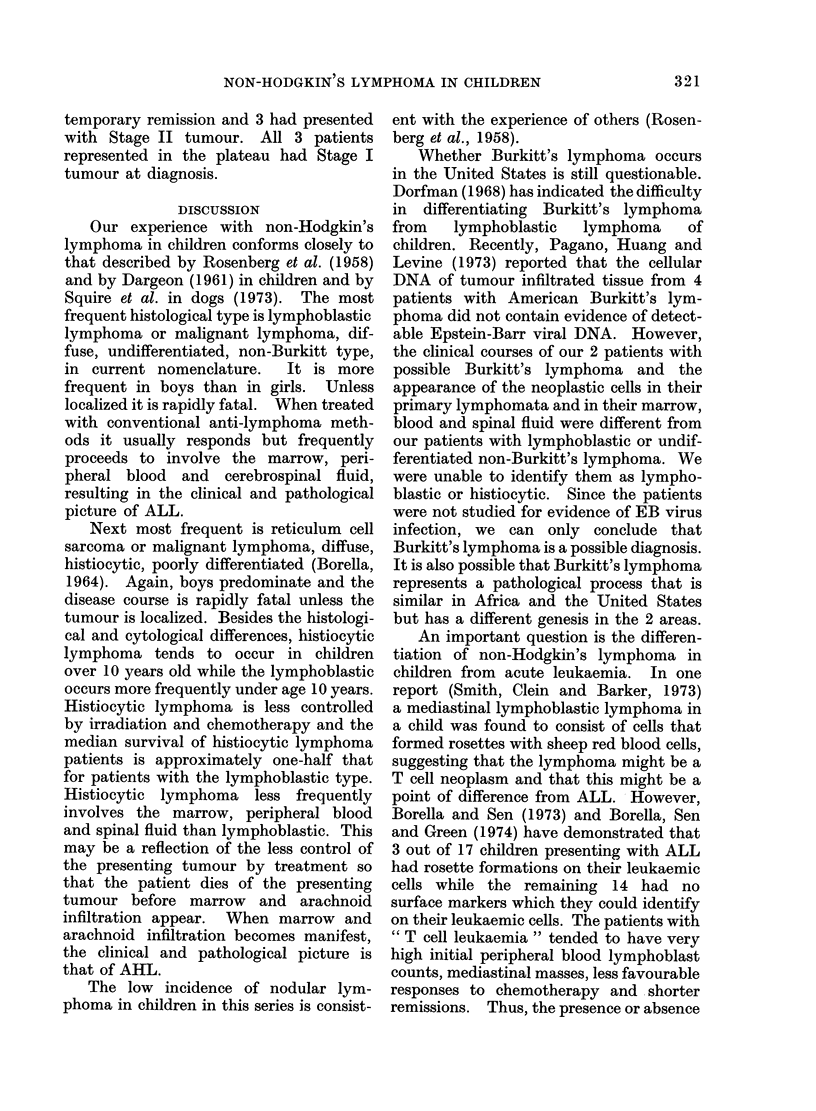


Images in this article
Selected References
These references are in PubMed. This may not be the complete list of references from this article.
- Aur R. J., Hustu H. O., Simone J. V., Pratt C. B., Pinkel D. Therapy of localized and regional lymphosarcoma of childhood. Cancer. 1971 Jun;27(6):1328–1331. doi: 10.1002/1097-0142(197106)27:6<1328::aid-cncr2820270608>3.0.co;2-a. [DOI] [PubMed] [Google Scholar]
- BORELLA L. RETICULUM CELL SARCOMA IN CHILDREN. Cancer. 1964 Jan;17:26–31. doi: 10.1002/1097-0142(196401)17:1<26::aid-cncr2820170105>3.0.co;2-t. [DOI] [PubMed] [Google Scholar]
- Borella L., Sen L. T cell surface markers on lymphoblasts from acute lymphocytic leukemia. J Immunol. 1973 Oct;111(4):1257–1260. [PubMed] [Google Scholar]
- Carbone P. P., Kaplan H. S., Musshoff K., Smithers D. W., Tubiana M. Report of the Committee on Hodgkin's Disease Staging Classification. Cancer Res. 1971 Nov;31(11):1860–1861. [PubMed] [Google Scholar]
- DARGEON H. W. Lymphosarcoma in childhood. Am J Roentgenol Radium Ther Nucl Med. 1961 Apr;85:729–732. [PubMed] [Google Scholar]
- Dorfman R. F. Diagnosis of Burkitt's tumor in the United States. Cancer. 1968 Apr;21(4):563–574. doi: 10.1002/1097-0142(196804)21:4<563::aid-cncr2820210404>3.0.co;2-p. [DOI] [PubMed] [Google Scholar]
- Pagano J. S., Huang C. H., Levine P. Absence of Epstein-Barr viral DNA in Amercian Burkitt's lymphoma. N Engl J Med. 1973 Dec 27;289(26):1395–1399. doi: 10.1056/NEJM197312272892604. [DOI] [PubMed] [Google Scholar]
- ROSENBERG S. A., DIAMOND H. D., DARGEON H. W., CRAVER L. F. Lymphosarcoma in childhood. N Engl J Med. 1958 Sep 11;259(11):505–512. doi: 10.1056/NEJM195809112591101. [DOI] [PubMed] [Google Scholar]
- Smith J. L., Clein G. P., Barker C. R., Collins R. D. Characterisation of malignant mediastinal lymphoid neoplasm (Sternberg sarcoma) as thymic in origin. Lancet. 1973 Jan 13;1(7794):74–77. doi: 10.1016/s0140-6736(73)90469-8. [DOI] [PubMed] [Google Scholar]
- Squire R. A., Bush M., Melby E. C., Neeley L. M., Yarbrough B. Clinical and pathologic study of canine lymphoma: clinical staging, cell classification, and therapy. J Natl Cancer Inst. 1973 Aug;51(2):565–574. [PubMed] [Google Scholar]




